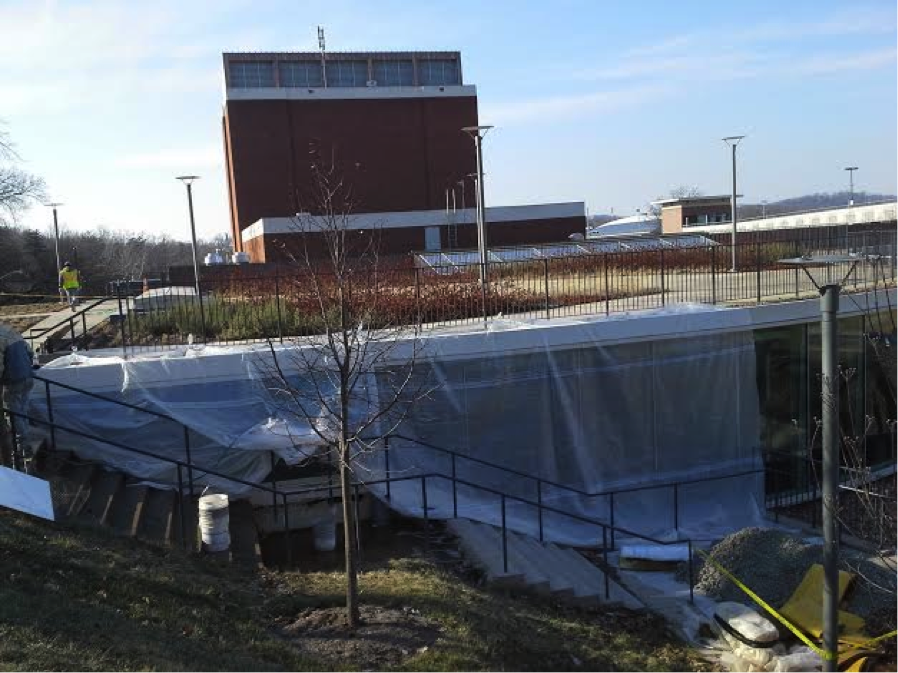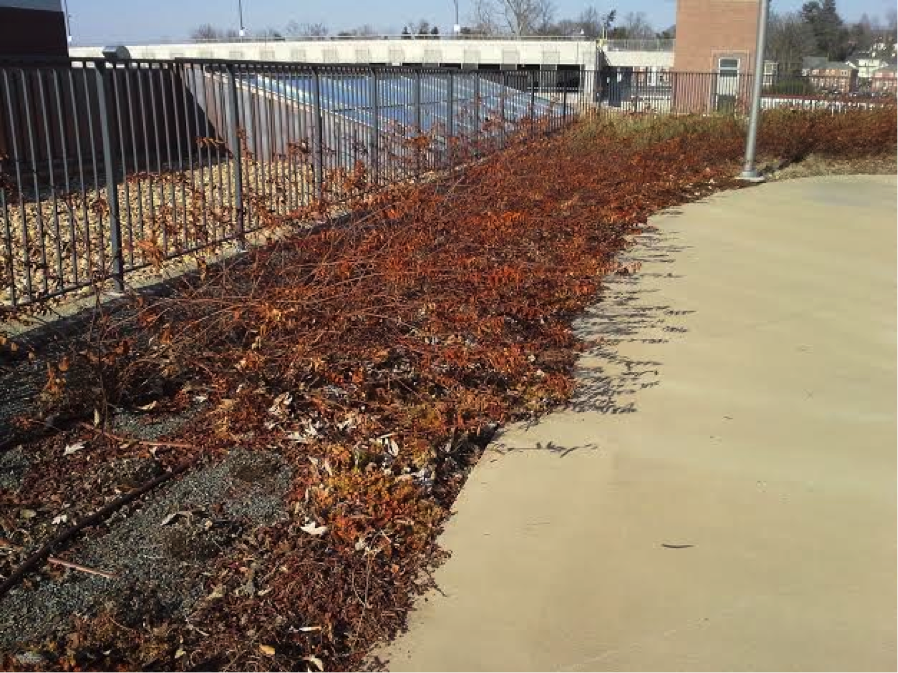As our group prepared to take on the task of cataloging the biodiversity found on green roofs around the University of Virginia, we were faced with an initial uncertainty- what defines a green roof? In particular, we asked ourselves what distinguishes a green roof from greenery on a roof? After further research on the topic, it is obvious that there is no quintessential prototype of a green roof.
Green roofs, sometimes referred to as “living roofs,” are growing in popularity and abundance in urban environments. Their manifestation varies significantly from continuous roof-spanning versions, to modular greenery and potted plants, to even rooftop ponds that serve to treat greywater. In general, a typical green roof is composed of vegetation growing over a weatherproof membrane. Additional root-protective layers and irrigation systems are sometimes incorporated as well.
While the appearance and structure of green roofs can be diverse, the accompanying ecosystem services are universal. These benefits can be broken down into three main groupings: environmental, economic, and aesthetic benefits. Green roofs provide an added habitat to otherwise barren urban environments. Plants have the ability to filter pollutants from the atmosphere, which improves local air quality. Vegetation can also serve in storm water retention, providing additional environmental benefits. Green roofs have a cooling effect that helps to combat the urban heat island effect. They provide enhanced insulation to buildings, which saves heating and cooling energy, therefore saving money. Green roofs also protect the actual roof surface and may increase the longevity of the structure. This saves money from being spent on maintenance and replacement. The aesthetic benefits of green roofs are not negligible either. In class, we have discussed the numerous health benefits humans receive from being in close contact with nature. Studies have shown that greenery is beneficial to our mind, body, and spirit.
In early February, our team decided to check out our first green roof at the University of Virginia. We visited Ruth Caplin Theatre, one of the university’s drama buildings. There, a grassy hills gently slopes upward and levels off at the rooftop of the theater. On the roof we found multiple plant species, a mix of hard concrete surfaces and vegetation, and they appeared to be utilizing a drip irrigation system. Overall, this green roof is highly accessible.



Over the course of the semester our team plans to visit multiple green roofs around grounds, meet with UVA Facilities Management, as well as interview the architect to discuss his intentions in implementing green rooftop infrastructure in his design.